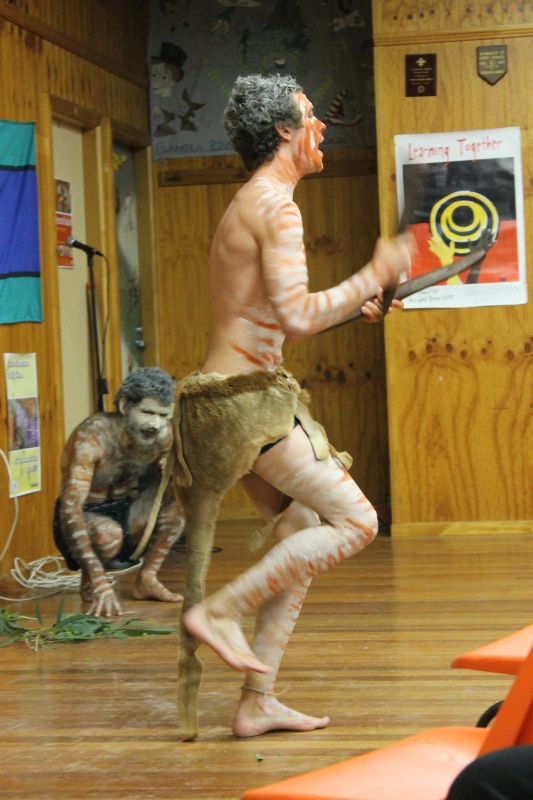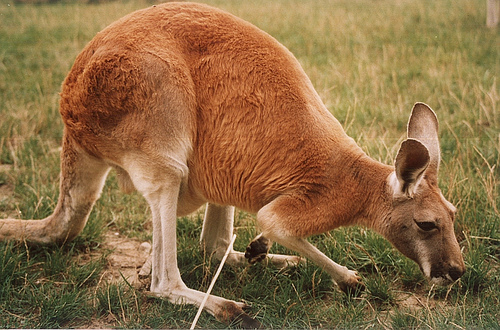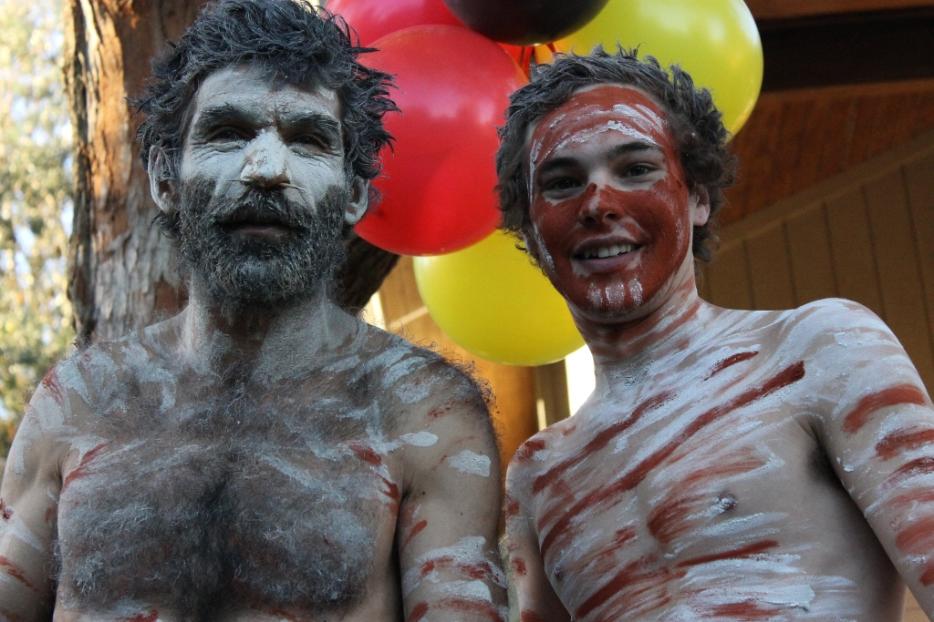June 2 - 8, 2013: Issue 113
Kangaroo Dance
 Last Sunday we attended the Sorry Day at North Narrabeen and saw some great traditional dances and heard some wonderful songs. The Guringai Festival is on at present and there are some events for you listed on this page. One dance we saw and thought you may like is the Kangaroo Dance.
Last Sunday we attended the Sorry Day at North Narrabeen and saw some great traditional dances and heard some wonderful songs. The Guringai Festival is on at present and there are some events for you listed on this page. One dance we saw and thought you may like is the Kangaroo Dance.
There are many Indigenous dance groups in Australia that perform to keep their culture alive, to keep passing on stories to our young people and to teach non-Indigenous people about the diversity of Indigenous Australia. For Aboriginal tribes dancing is used to tell stories of their past, animals and the dreamtime. These dances are an important part of their culture. Indigenous people have been dancing since the beginning of time, and traditionally would have danced often.
A little more about the Red Kangaroo and Kangaroo Dances
The red kangaroo (Macropus rufus) is the largest of all kangaroos, the largest mammal native to Australia, and the largest extant marsupial. Red kangaroos are the most recently evolved kangaroos (Dawson 1995): Scientists suggest euros (Macropus robustus) and red kangaroos (Macropus rufus) diverged recently (thousands of years ago) as separate species (Tyndale-Biscoe 2005): Aboriginal Aranda of Central Australia believed their totemic spirit Ara was manifest in the red kangaroo (Newsome 1980) (Strehlow 1947)
Ara made two Dreamtime journeys: A daytime visit to 14 totemic sites in MacDonnell Ranges. A nighttime underground journey across the desert to sacred sites to the north. At one totemic sacred site (Krantji), Aranda conducted rituals to increase the population of Ara. No hunting was permitted in or around totemic sites.
Dreamtime songs and stories reflected natives' knowledge and tradition, especially (Tyndale-Biscoe 2005): Red kangaroo's adaptations to harsh desert climate and Aranda's responsibility to protect kangaroo refuges Newsome (1980) studied the ecology of red kangaroos in MacDonnell Ranges: At least 10 of the 14 totemic sites for Ara were in actuality important refuges where kangaroo retreated during drought and so Traditional knowledge can also be seen as "a network of conservation reserves sited in prime habitat..." (Tyndale-Biscoe 2005) Kangaroos were vital to Aboriginal peoples' traditional way of life (Tunbridge 1991): As a primary food item in diet and as a focus of much ritual and many Dreamtime creation stories.
A Kangaroo Dance traditionally was performed at aboriginal ceremonial meetings or "corroborees", according to traditional history (Reed 1978): A kangaroo hiding behind a tree once watched people dancing. Inspired, the kangaroo wanted to join the dancers. Dancers were greatly surprised and decided to adorn themselves to look like kangaroos. Since the kangaroo had intruded into a semi-sacred event, it was also allowed to join candidates at initiation ceremonies.
The dancers in our photographs are Ged McMinn and Les McLeod, both of whom live locally and share their traditional knowledge often with Pittwater residents. There's a great video above this where you can see something like the dance we saw.
Bohra the kangaroo and Dinewan the emu dreamtime story
 In the dreamtime there was no daytime and everything was dark. Bohra the kangaroo took Dinewan the emu to be his wife. Dinewan was happy for awhile, but became increasingly restless, as all Bohra wanted to do was to laze around and sleep. Bohra always slept with his back to the east, and this stopped the sun from rising. Dinewan would love to run around and stretch her legs and wings. She began to complain about Bohra's laziness and the constant darkness in which they lived.
In the dreamtime there was no daytime and everything was dark. Bohra the kangaroo took Dinewan the emu to be his wife. Dinewan was happy for awhile, but became increasingly restless, as all Bohra wanted to do was to laze around and sleep. Bohra always slept with his back to the east, and this stopped the sun from rising. Dinewan would love to run around and stretch her legs and wings. She began to complain about Bohra's laziness and the constant darkness in which they lived.
To pass the time, Dinewan would fiddle with the leaves and they would sometimes fall on her husbands face and wake him up Dinewan was bored doing nothing and unable to see, one night, longing for some exercise she flew from her nest, and in the darkness flew straight into a tree, the collision broke both of her wings and she fell to the ground as she returned on foot, to Bohra to tell him what had happened, she stumbled over the sticks and rocks in the bush, which scratched all the feathers from her legs. When Bohra saw his wife, he felt very ashamed; his beautiful wife was broken before him.
To make amends, he promised her that he would roll back the night. So now, when you look at the kangaroo in the morning his back is still to the east, and in the afternoon his back is to the west. So he made it day to see and night to sleep, and when you look at the emu she has no wings for flight and featherless legs.

Above: Les and Ged. Picture by A J Guesdon, 2013.